Classification Colorimetric method | Analytes Reducing sugars | |
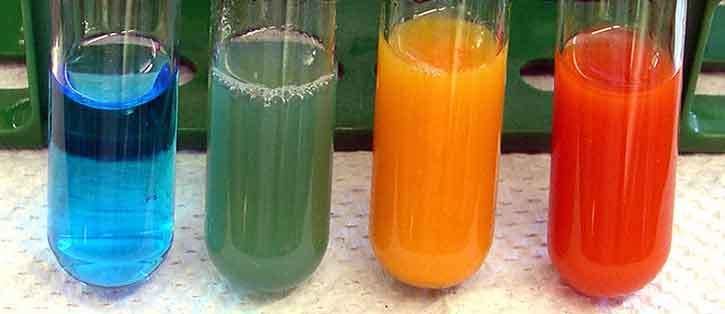 | ||
Similar Tollens' reagent, Fehling's solution, Dextrose equivalent | ||
Benedict's reagent (often sold as Benedict's Qualitative Solution or Benedict's Solution) is a chemical reagent named after an American chemist, Stanley Rossiter Benedict.
Contents
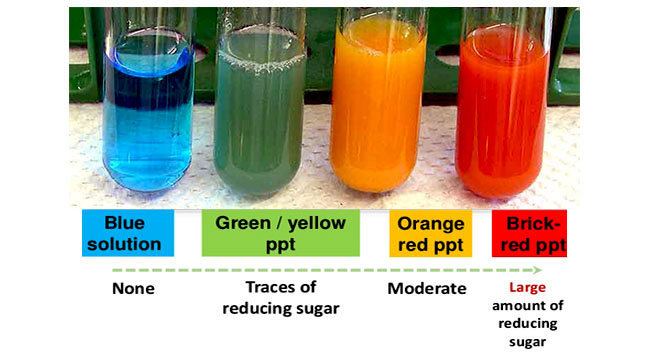
Benedict's reagent is a chemical reagent commonly used to detect the presence of reducing sugars, however other reducing substances also give a positive reaction. This includes all monosaccharides and many disaccharides, including lactose and maltose. Such tests that use this reagent are called the Benedict's tests.
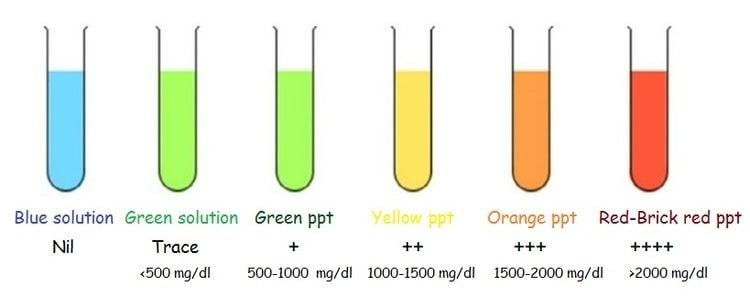
Generally, Benedict's test detects the presence of aldehydes, alpha-hydroxy-ketones, also by hemiacetal, including those that occur in certain ketoses. Thus, although the ketose fructose is not strictly a reducing sugar, it is an alpha-hydroxy-ketone, and gives a positive test because it is converted to the aldoses glucose and mannose by the base in the reagent.

A positive test with Benedict's reagent is shown by a colour change from clear blue to a brick-red precipitate.
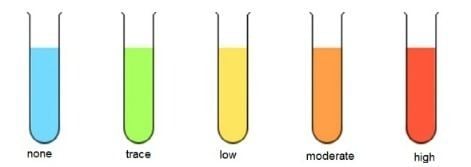
One litre of Benedict's reagent can be prepared from 100 g of anhydrous sodium carbonate, 173 g of sodium citrate and 17.3 g of copper(II) sulfate pentahydrate. It is often used in place of Fehling's solution.

The principle of Benedict's test is that when reducing sugars are heated in the presence of an alkali they get converted to powerful reducing species known as enediols. Enediols reduce the cupric compounds (Cu2+) present in the Benedict's reagent to cuprous compounds (Cu+) which get precipitated as insoluble red copper(I) oxide(Cu2O).
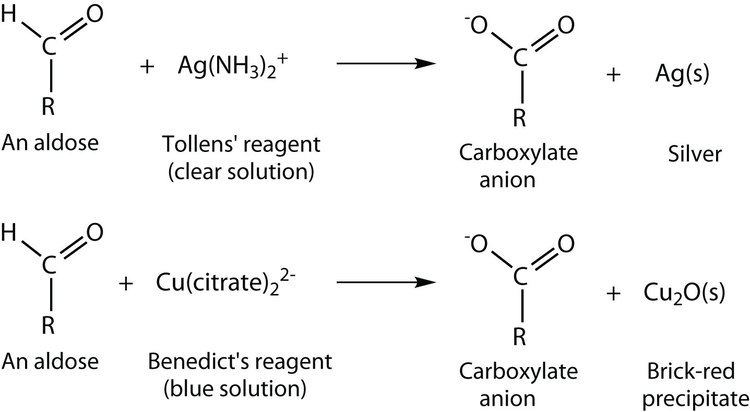
The color of the obtained precipitate gives an idea about the quantity of sugar present in the solution, hence the test is semi-quantitative. A greenish precipitate indicates about 0.5 g% concentration; yellow precipitate indicates 1 g% concentration; orange indicates 1.5 g% and red indicates 2 g% or higher concentration.
Benedict s reagent
Chemical test
To test for the presence of monosaccharides and reducing disaccharide sugars in food, the food sample is dissolved in water, and a small amount of Benedict's reagent is added. During a water bath, which is usually 4–10 minutes, the solution should progress in the colors of blue (with no reducing sugar present), green, yellow, orange, red, and then brick red or brown (with high reducing sugar present). A colour change would signify the presence of a reducing sugar. The common disaccharides lactose and maltose are directly detected by Benedict's reagent, because each contains a glucose with a free reducing aldehyde moiety, after isomerization.
Sucrose (table sugar) contains two sugars (fructose and glucose) joined by their glycosidic bond in such a way as to prevent the glucose isomerizing to aldehyde, or the fructose to alpha-hydroxy-ketone form. Sucrose is thus a non-reducing sugar which does not react with Benedict's reagent. Sucrose indirectly produces a positive result with Benedict's reagent if heated with dilute hydrochloric acid prior to the test, although after this treatment it is no longer sucrose. The acidic conditions and heat break the glycosidic bond in sucrose through hydrolysis. The products of sucrose decomposition are glucose and fructose, both of which can be detected by Benedict's reagent, as described above.
Starches do not react or react very poorly with Benedict's reagent, due to the relatively small number of reducing sugar moieties, which occur only at the ends of carbohydrate chains. Inositol (myo-inositol) is another carbohydrate which produces a negative test.
Benedict's reagent can be used to test for the presence of glucose in urine. Glucose in urine is called glucosuria and can be indicative of diabetes mellitus, but the test is not recommended or used for the diagnosis of diabetes mellitus. False positive reaction can be due to the presence of other reducing substances in urine such as ascorbic acid (during intake of vitamin supplements), drugs (levodopa, contrast used in radiological procedures) and homogentisic acid (alkaptonuria).
Benedict's solution
It is an equi-volume mixture of aqueous solution of CuSO4 and sodium citrate. Here sodium citrate is the complexing agent. Benedict's solution is a deep-blue alkaline solution used to test for the presence of the aldehyde functional group, - CHO. The substance to be tested is heated up to 95 °C (for example, in a water bath) with Benedict's solution; formation of a brick-red precipitate indicates presence of the aldehyde group in relatively high concentrations. Since simple sugars (e.g., glucose) give a positive test, the solution is used to test for the presence of glucose in urine, a symptom of diabetes. One litre of Benedict's solution contains 173 grammes sodium citrate, 100 grammes sodium carbonate, and 17.3 grammes cupric sulphate pentahydrate. It reacts chemically with Fehling's solution; the cupric ion (complexed with citrate ions) is reduced to cuprous ion by the aldehyde group (which is oxidised), and precipitates as cuprous oxide, Cu2O.
Quantitative reagent
Benedict's quantitative reagent contains potassium thiocyanate and is used to determine how much reducing sugar is present. This solution forms a copper thiocyanate precipitate which is white and can be used in a titration. The titration should be repeated with 1% glucose solution instead of the sample for calibration.
